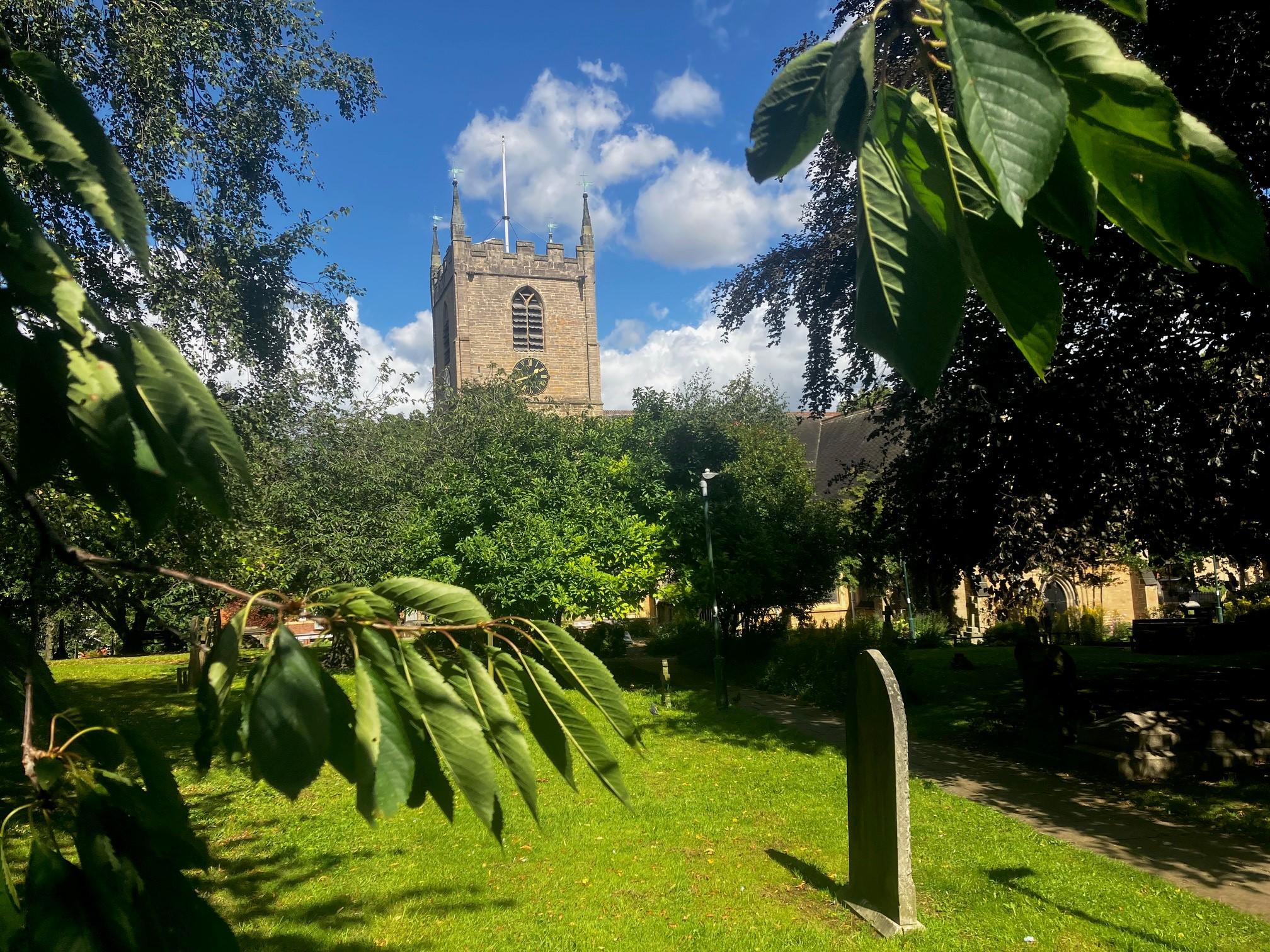St Mark
Bestwood, Nottinghamshire
Opened in 1887 largely to serve an area developed as a consequence of the work undertaken by the Bestwood Coal and Iron Company, founded in 1872.

Hucknall has a fascinating history and heritage, many of the famous people who once lived here, went on to help shape the world, whether through literature, the arts, the built environment or early computing.
Hucknall, Nottinghamshire
The church has 20 windows filled with stained glass produced by the Kempe Studios in London; one of the largest collections of any parish church in England. They are fine examples of the Victorian Gothic Revival from a time when the Anglican Church was rediscovering its medieval roots. Charles Eamer Kempe (1837-1907) was called to become an Anglican priest but found that he could not answer; a severe speech impediment prevented him. Instead he learned the art of stained glass. His work is full of the medieval religious symbolism which was back in favour for the first time since the Reformation of the 16th century.
George Gordon Byron was born in London but his formative years were spent in Nottinghamshire in order to be near Newstead Abbey. To the teenage Byron Newstead’s lonely gothic ruins, haunted by past glory, slowly being reclaimed by nature was the essence of a romantic landscape. At 15 Byron also found his first love, Mary Chaworth. Both Mary and Newstead would feature many times in his work throughout his life. By 1812 he was a famous poet whose many unconventional love affairs fascinated and appalled English society. Byron left England in 1816 in search of freedom, never to return alive. The Byronic spirit lives on but his earthly remains rest in the family vault here.
A hundred years before the first electronic computer Ada Lovelace wrote the first programme, and predicted a computer imitating human creativity. She was Lord Byron’s daughter, and the last Byron buried here in the family vault. In 1834 she met Charles Babbage, who was working on his ‘Analytical Engine’; a mechanical computer. While he was working on the hardware he asked Ada to deal with mathematical problems which might be solved using the engine. She produced an algorithm; a computer programme, the world’s first piece of software.
Bestwood, Nottinghamshire
Opened in 1887 largely to serve an area developed as a consequence of the work undertaken by the Bestwood Coal and Iron Company, founded in 1872.
Bestwood, Nottinghamshire
Originally a Methodist Church, planned to cater to the new Park Rise estate, built in the early 1960s.
Bulwell, Nottinghamshire
The foundation stone of this high Victorian church was laid in October 1882, it was designed by William Knight, the architect of St Andrew’s Church, Mansfield Road, Nottingham.